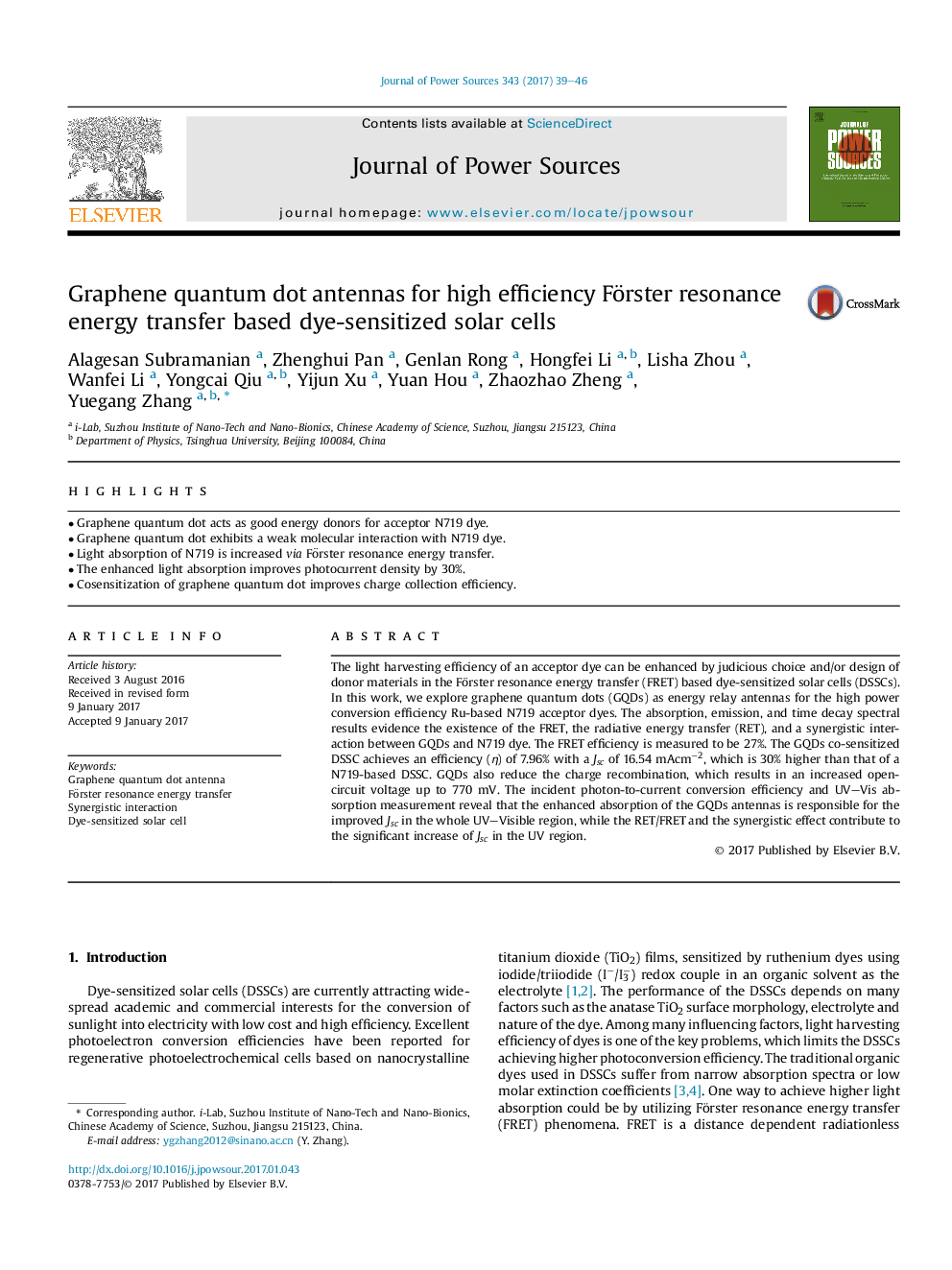| Article ID | Journal | Published Year | Pages | File Type |
|---|---|---|---|---|
| 5149470 | Journal of Power Sources | 2017 | 8 Pages |
Abstract
The light harvesting efficiency of an acceptor dye can be enhanced by judicious choice and/or design of donor materials in the Förster resonance energy transfer (FRET) based dye-sensitized solar cells (DSSCs). In this work, we explore graphene quantum dots (GQDs) as energy relay antennas for the high power conversion efficiency Ru-based N719 acceptor dyes. The absorption, emission, and time decay spectral results evidence the existence of the FRET, the radiative energy transfer (RET), and a synergistic interaction between GQDs and N719 dye. The FRET efficiency is measured to be 27%. The GQDs co-sensitized DSSC achieves an efficiency (Æ) of 7.96% with a Jsc of 16.54Â mAcmâ2, which is 30% higher than that of a N719-based DSSC. GQDs also reduce the charge recombination, which results in an increased open-circuit voltage up to 770Â mV. The incident photon-to-current conversion efficiency and UV-Vis absorption measurement reveal that the enhanced absorption of the GQDs antennas is responsible for the improved Jsc in the whole UV-Visible region, while the RET/FRET and the synergistic effect contribute to the significant increase of Jsc in the UV region.
Related Topics
Physical Sciences and Engineering
Chemistry
Electrochemistry
Authors
Alagesan Subramanian, Zhenghui Pan, Genlan Rong, Hongfei Li, Lisha Zhou, Wanfei Li, Yongcai Qiu, Yijun Xu, Yuan Hou, Zhaozhao Zheng, Yuegang Zhang,
